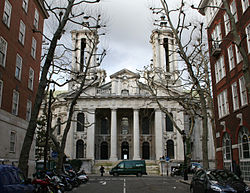I came across this colorful book, most recently updated and published in 2012, in the library. The full title is Royal London: A Guide to the Capital’s Historic and Iconic Royal Sites. More than 100 locations are described from the Buckingham Palace we all know to a Coronation Stone in the Royal Borough of Kingston Upon Thames where seven Saxon Kings were crowned in the 9th and 10th centuries.
Coronation Stone
The author of the volume, Jane Struthers, has written many nonfiction books about England,
English History, and other topics.
Jane Struthers
As readers of this blog might guess, for both Kristine and Victoria, reading about London and looking at pictures are just about our favorite activities in the entire world, short of actually walking in London’s streets. So it will come as no surprise to know that Victoria spent quite a few hours with this book. As usual, I (forgive the switch to first person, please) checked out how many of the places I have visited.
The book begins with Westminster, and most of those we have even written about on this blog. Multiple visits to the Palace and to the Queen’s Gallery, for example. The processions in the Mall for Trooping the Colour and a walk in the Marlborough House Garden. A walk through Westminster’s residential area, just south of Westminster Abbey, including the church St. John’s, Smith Square, scene of many excellent musical events.
St. John’s, Smith Square
Struthers relates the story of how the church got the nickname “Queen Anne’s Footstool.” Supposedly the Queen was annoyed at being asked again what the new building should look like. She kicked over her footstool and said, “Like that!” Therefore the church has four tall towers, only two of which can be seen above. Nevertheless, it is an excellent example of English Baroque and is renowned for its excellent acoustics. It was heavily bombed in WWII and restored as a concert venue.
The Guildhall
In other sections of the City and the metro area, you will find familiar spots described, such as the Guildhall, the Tower of London, and Trafalgar Square. And there are other, lesser known sites with interesting royal connections. Ely Place, for example, is now the site of crown-owned terrace houses, but once Ely House (long gone) was the place Philippa of Hainault stayed at Christmas 1327, before her marriage to Edward III. Who knew?
Ely Place
1772 engraving of Ely House and St. Etheldredea’s Church
Familiar or unusual, it is our beloved London. Now I have a few new targets for my next trip. It can’t come soon enough!






